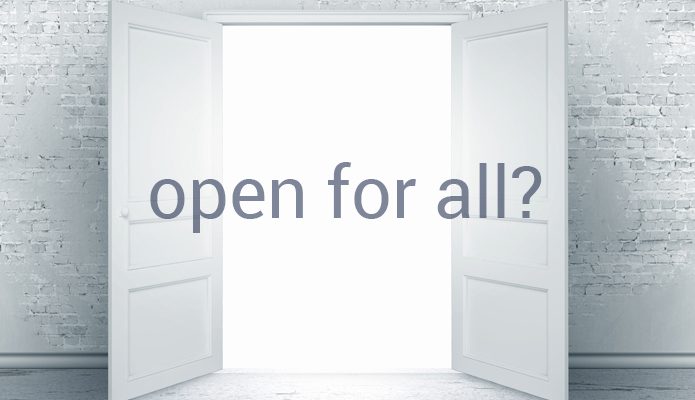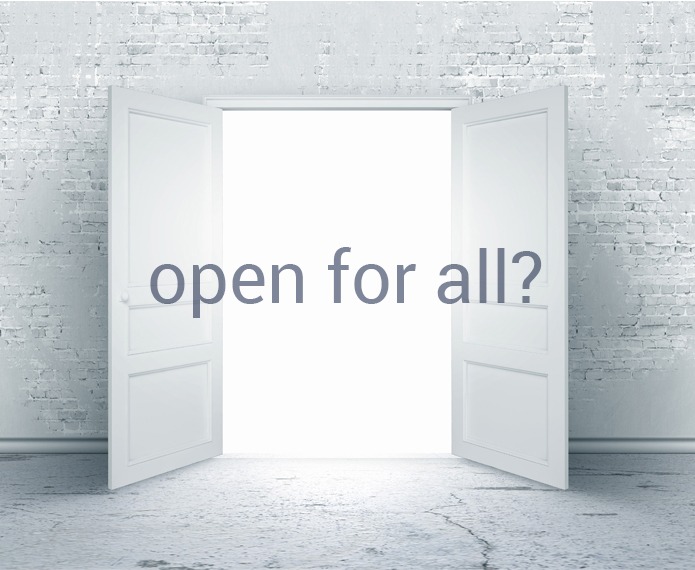The thinking of Comrade F. Dobler from the early 20th century remains relevant and even prescient: those who need open access to information may be those who are fundamentally excluded from public libraries.

Developing a Community-Led Service Culture
My previous postings have explored how strategies, structures and systems must be community-led if public libraries are to meet community needs. But the most crucial element in any successful transformation process is the organizational culture or
“the way we do things around here.”
These are the attitudes, behaviours and values that are unique to each public library. Strategies, structures and systems can come and go but nothing really changes unless the culture is changed. Strategy, structures and systems are tangible and visible, but culture lies ‘below the water line’ like the hidden part of an iceberg. Culture has sunk many attempts at organizational change. Research has indicated that it can take five, ten or even fifteen years to effect sustainable culture change. This time period is often beyond the life of a strategic plan or the tenure of a CEO.
That is part of the problem – changing culture takes time and effort, persistence and resilience, and many attempts at cultural change are abandoned prematurely through inertia or attrition.
So what does culture look like in practice? Part of the problem is that it is difficult or even impossible to see. It is the wallpaper and the background noise that surrounds us at work every day. We take it for granted. We don’t challenge or question it. It is always there. It includes the written, but most often the unwritten, rules of the workplace. Someone new to the organization may ask the innocent question “why do we do things this way” to which the answer may well be “because we always have.” This is the “if it’s not broken, it doesn’t need fixing” school of thought, which is deeply embedded in the public library.
One way to change culture is to use inclusive and transparent processes to develop new strategies, structures and systems. The process of reviewing existing strategies, structures and systems allows the question to be asked (at least five times), “why do we do things this way.” The ultimate answer must be related to the strategic objectives of the organization, because if “the way that we do things around here” does not enable the delivery of these objectives, then we have to make changes to the way we do things. In this sense the development of community-led strategies, structures and systems act as cultural change accelerators.
Duhigg uses a water metaphor to describe culture:
“The water is habits, the unthinking choices and invisible decisions that surround us every day – and which, just by looking at them, become visible again. Water is the most apt analogy for how a habit works. Water hollows out for itself a channel, which grows broader and deeper; and, after having ceased to flow, it resumes, when it flows again, the path traced by itself before.”
Culture is rooted in the organization’s history and habits and so it is important to get fresh and different perspectives. This can be achieved in a number of ways. Staff can be encouraged to attend conferences and visit other public libraries to see how things can be done differently. Public library staff from a different system can be asked to ‘peer review’ your service to provide objective feedback and suggestions for change. Peer reviews can also be carried out by partner organizations such as universities, colleges, schools and other cultural service providers.
What we tend to do is only talk to ourselves and our active users – those who are already familiar and comfortable with the way we do things. We need to challenge this culture of comfort and complacency. We need to move staff out of their comfort zones. We should be permanently uncomfortable – not to such a degree that it is disabling, but in order for us to be constantly reviewing and fine-tuning what we do. This will avoid the need for big disruptive change every five or ten years when strategies, structures, systems and culture are realigned.
Most problems and challenges within the public library, when fully analyzed, can be traced back to a need to change a strategy, structure or system.
It is helpful to get staff thinking in these terms and using this language to address issues that are facing the organization. Most cultures are based on language and so changing the language is an important aspect of culture change. For example, is it still useful to describe the public library in terms of Adult, Children’s and Reference Services? This is a very limited and inadequate description of why the public library exists and what it does. If we change the language to encouraging lifelong learning, embracing innovation and change, supporting our local economy, promoting social inclusion and diversity, and fostering personal growth and well-being, we not only better describe our value to local communities, but we change our internal culture as well.
Perhaps the most powerful way to identify public library culture and how it needs to change is to engage the 54 percent of Canadians who do not use a library.
They will tell us directly what they like and don’t like about the library, what meets their needs and what is irrelevant. They will give us new insights into how we plan, design, deliver and evaluate library services. They will shine a strong light on our habits – both good and bad – and enable us to see things that are so much a part of our history and culture that we are not able to see them for ourselves. They will open our eyes to the changes that need to be made in order to develop inclusive and community-led libraries.
They will be like the young fish swimming along that meets two old fish swimming the other way. The young fish nods at them and says:
“Good morning. How’s the water today?”
The two old fish swim on for a bit, and then eventually one of them looks over at the other and asks:
“What the hell is water?”
John Pateman is the CEO / Chief Librarian of the Thunder Bay Public Library. The Open for All? column explores the nature of libraries and their commitment to openness.
